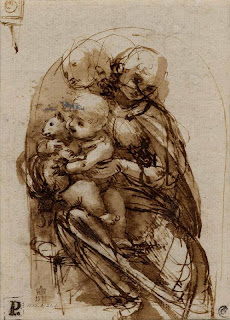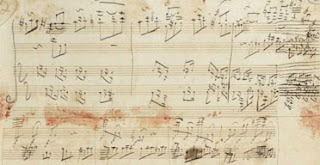 National Novel Writing Month ended last Friday, with a total of 1187,931,929 words being written worldwide. All over the internet people are blogging about their experiences. My friend Kathleen Bolton at Writer Unboxed is happy she created some good prose even though she didn’t reach the 50,000 word NaNoWriMo goal. I’m happy too but in a different way. I did reach 50K though I’ll admit most of the scenes will require heavy duty revisions.
National Novel Writing Month ended last Friday, with a total of 1187,931,929 words being written worldwide. All over the internet people are blogging about their experiences. My friend Kathleen Bolton at Writer Unboxed is happy she created some good prose even though she didn’t reach the 50,000 word NaNoWriMo goal. I’m happy too but in a different way. I did reach 50K though I’ll admit most of the scenes will require heavy duty revisions.
Critics of the NaNoWriMo process question the point in writing madly to meet a quota. For me, it’s not a matter of quantity versus quality because during my early drafts my goal isn’t really to generate words so much as ideas. Quantitative goals keep me tackling scene after scene, concentrating on characterization and plotting and leaving stylistic issues for the rewrites.
I’ve been known to call my rough drafts primordial ooze. But they can also be likened to an artist’s sketches. Consider this Da Vinci study for “Virgin and Child with Cat”. Note the different positioning of head, limbs. The fluidity, the testing of ideas. OK, maybe it’s pretentious to compare my scribblings to efforts of creative minds like Da Vinci. But I find it reassuring that their work went through messy phases–though sketches like this (unlike my rough drafts) have a beauty of their own.
 Another artistic genius whose process fascinates me is Beethoven. A few years ago a librarian found the lost manuscript for a piano version of Beethoven’s Grosse Fugue (the last movement in the string quartet in B flat major, Op 130). According to article in the Guardian the manuscript “shows the extent of Beethoven’s reworkings and includes deletions, corrections and deep erasures – occasionally the paper is rubbed right through leaving small holes – smudged alterations and several pages pasted over the original or affixed with sealing wax.” It even looks like there’s blood on the page–don’t we all know that feeling?! (The articles says it’s red crayon.)
Another artistic genius whose process fascinates me is Beethoven. A few years ago a librarian found the lost manuscript for a piano version of Beethoven’s Grosse Fugue (the last movement in the string quartet in B flat major, Op 130). According to article in the Guardian the manuscript “shows the extent of Beethoven’s reworkings and includes deletions, corrections and deep erasures – occasionally the paper is rubbed right through leaving small holes – smudged alterations and several pages pasted over the original or affixed with sealing wax.” It even looks like there’s blood on the page–don’t we all know that feeling?! (The articles says it’s red crayon.)
The Grosse Fugue is one of Beethoven’s most innovative compositions, challenging to performers and listeners. Originally given a cool reception, it’s still the sort of piece that requires concentration and reveals more each time one hears it. I took my budding violinist to a performance by the Guarneri Quartet and we were both blown away.
I personally find it reassuring to know that even great creative works sometimes go through an ugly birthing process. But I suppose it could be scary as well. What do you think? Or would you rather enjoy the final result without knowing about the messy bits? Are there any artists (of any sort) whose methods or process inspire you?
Elena
www.elenagreene.com

